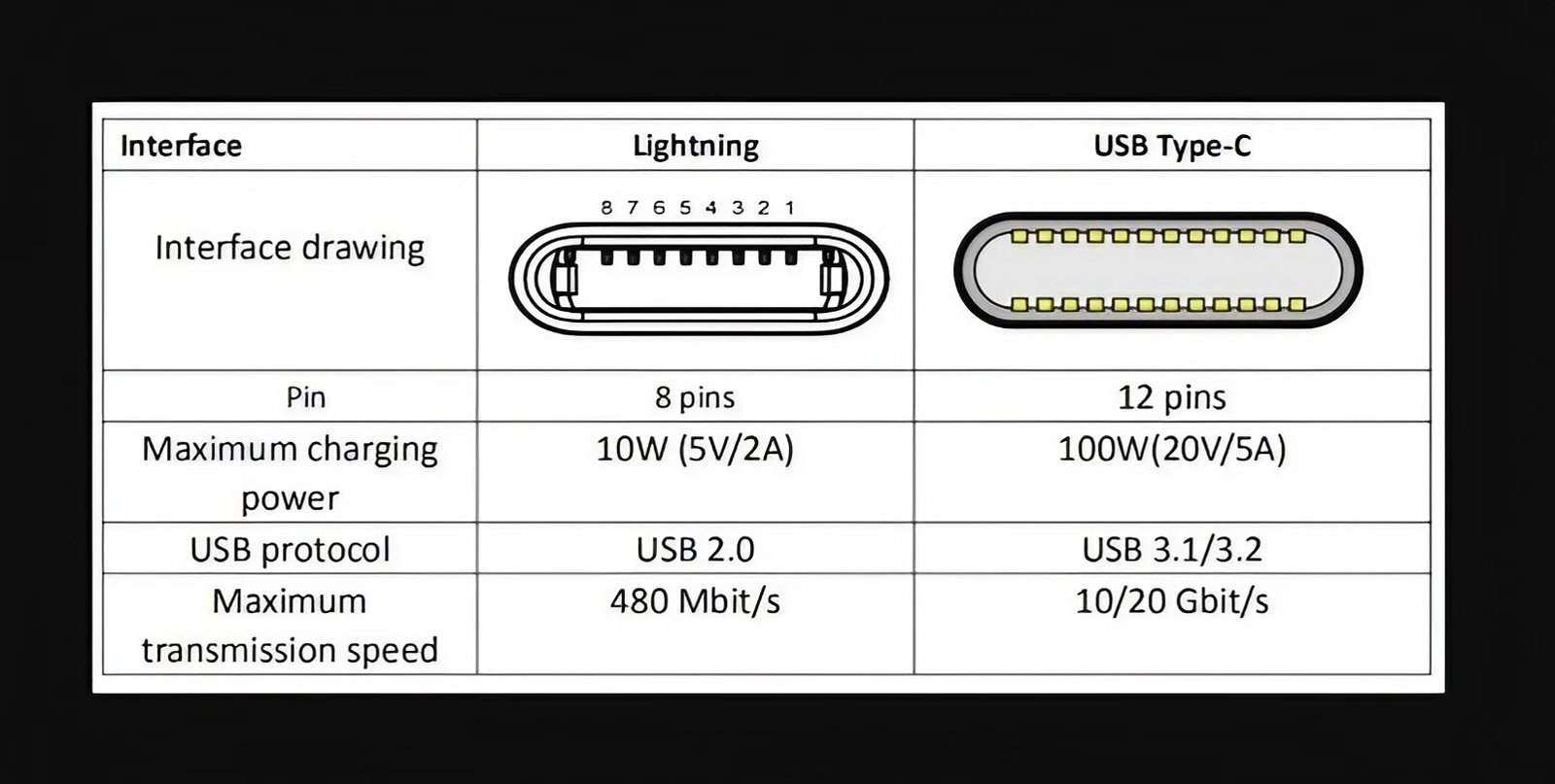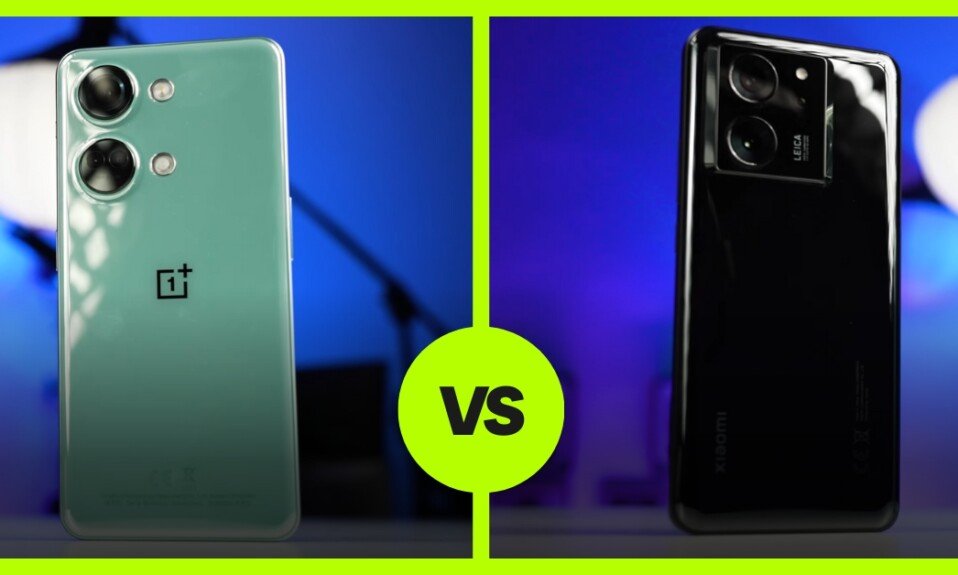USB-C vs Lightning: Lightning and USB-C are two popular charging cables you’ll find today. Many people use them to charge and transfer data to devices like smartphones, tablets, and laptops. As new iPhones, iPads, and MacBooks come out, everyone wants to keep their gadgets charged and ready.
But, what’s the difference between these two cables? Let’s dive in! Ultimate Showdown: USB-C vs Lightning – The Charging Speed Titans!
Understanding USB-C
USB-C is like the new kid on the block that everyone’s curious about. At first glance, all USB-C ports look the same. They have an oval shape and can connect either way – upside down or right side up. But there’s more to them than meets the eye.
Manufacturers usually label these ports:
- DisplayPort: Has a “DP” sign.
- Power Delivery: Shows a battery or plug sign.
- Thunderbolt 4: Features a lightning arrow design.
Lightning
Lightning is Apple’s proprietary cable. It’s mainly used for iPhones and iPads. While it’s reversible like USB-C, its power delivery is up to 20W, and data transfer speed is 480 Mbps. It’s reliable and efficient for Apple devices but doesn’t match the versatility and power of USB-C.
Apple makes the Lightning cable, and it only works with Apple products. On the other hand, a group called the USB Implementers Forum (USB-IF) created USB-C. This cable works with many different devices, not just Apple ones.

Now, let’s compare Lightning and USB-C to see which one might be best for your gadget.
A Brief History: USB-C vs Lightning
USB-C vs Lightning: Before we delve into the specifics, it’s essential to understand the origins of these ports. The Lightning port made its debut in 2012 with the iPhone 5. On the other hand, USB-C was introduced in 2014, making it relatively newer. While many might argue that USB-C is superior, Lightning has its merits.

Features and Capabilities
Both USB-C and Lightning ports allow users to perform similar functions, such as charging devices, transferring data, and connecting to external displays. However, there are notable differences in their capabilities:
| Lightning | USB-C | |
|---|---|---|
| Release Date | 2012 | 2014 |
| Connector Type | Proprietary | Open Standard |
| Power Delivery | Up to 20W | Up to 240W |
| Data Transfer Speed | 480 Mbps | 40 Gbps |
| Reversibility | Yes | Yes |
| Compatibility | Apple Devices | Most Devices |
- USB-C Port: USB-C is more versatile. Apple’s iPad lineup showcases this versatility. For instance, iPads with USB-C can display two different windows simultaneously, thanks to faster data transfer speeds. This makes USB-C more functional, especially for multitasking.
- Lightning Port: This port, primarily found on Apple devices, offers a stable connection for charging and data transfer. It’s been consistent across Apple devices since its introduction, making it familiar to many users.
The Advantages of USB-C
USB-C is becoming the universal standard. From gaming consoles like the PlayStation 5 to desktop PCs and even some cars, USB-C is everywhere. This widespread adoption means that in the next decade, we might only need one cord to charge all our devices.
For travelers, the convenience of USB-C is undeniable. Imagine boarding a flight and only needing one cable to charge both your laptop and phone. This streamlined approach reduces clutter and the need for multiple adapters.
The Advantages of Lightning
While USB-C is gaining traction, Lightning ports have their advantages:
- Availability: Lightning cables are easily available and often cheaper than USB-C cables.
- Design: Some users prefer the look of the Lightning port, which lacks the central line found in USB-C ports.
- Durability: Both ports are durable, but there’s no significant data suggesting one breaks more often than the other.
The Future of Connectivity
USB-C vs Lightning: There’s speculation that iPhones might go portless in the future. But for now, USB-C seems to be the way forward, especially outside the Apple ecosystem. It offers more features, faster speeds, and is becoming the universal standard.
USB-C vs Lightning: Which Offers Fast Charging Capabilities
When you’re trying to figure out whether to go with a Lightning or USB-C cable, it’s essential to understand their features. Let’s break it down with some bullet points!
Lightning
Exclusive to Apple:
Lightning is Apple’s own design, which means it’s only for Apple devices like iPhones, iPads, and iPods.
Compatibility:
If your gadget is an Apple product with a Lightning port, you’ll need Lightning cables and adapters to charge or connect it.
Price:
Generally, Lightning cables can be pricier than USB-C cables.
USB-C
Universal Standard:
USB-C is a connector that many different devices use. You’ll find it in smartphones, laptops, and tablets from various brands.
Versatility:
With a USB-C port, you have the freedom to use cables and adapters from different manufacturers.
Fast Data Transfer:
USB-C can move data around super quickly, making file transfers a breeze.
Powerful Charging:
USB-C can deliver more power, which means faster charging for your devices.
Video Options:
Need to connect to a screen? USB-C offers more ways to output video.
Conclusion: USB-C vs Lightning
In the battle of USB-C vs. Lightning, your decision will depend on your device and what you need. If you’re all about Apple, Lightning might be your go-to. But if you’re looking for versatility and future-proof features, USB-C is a strong contender.
While the Lightning port has served Apple users well for nearly a decade, USB-C’s versatility and fast charging capabilities make it the preferred choice for many. As technology evolves, it’s exciting to see how these ports will shape our digital experiences.



